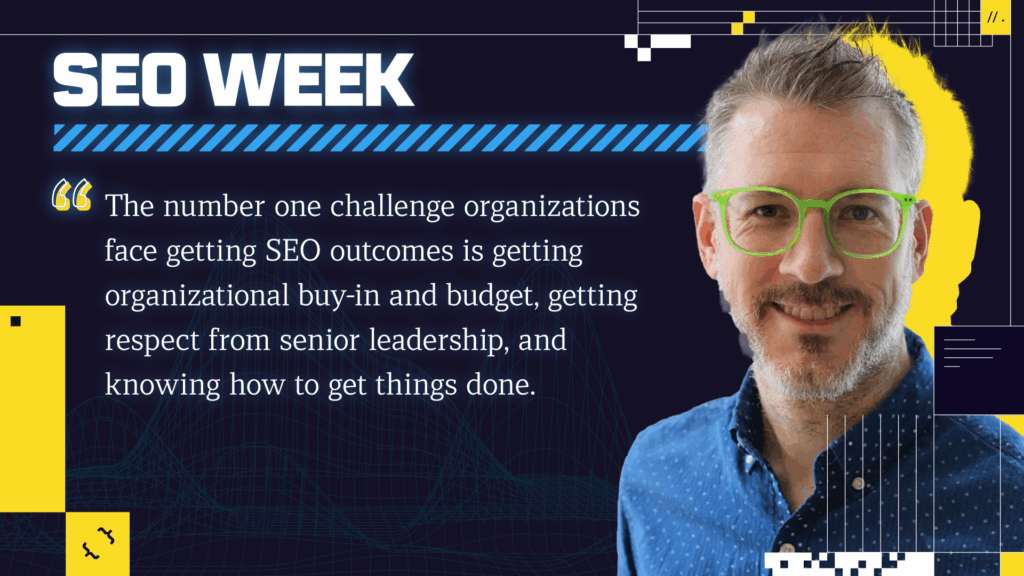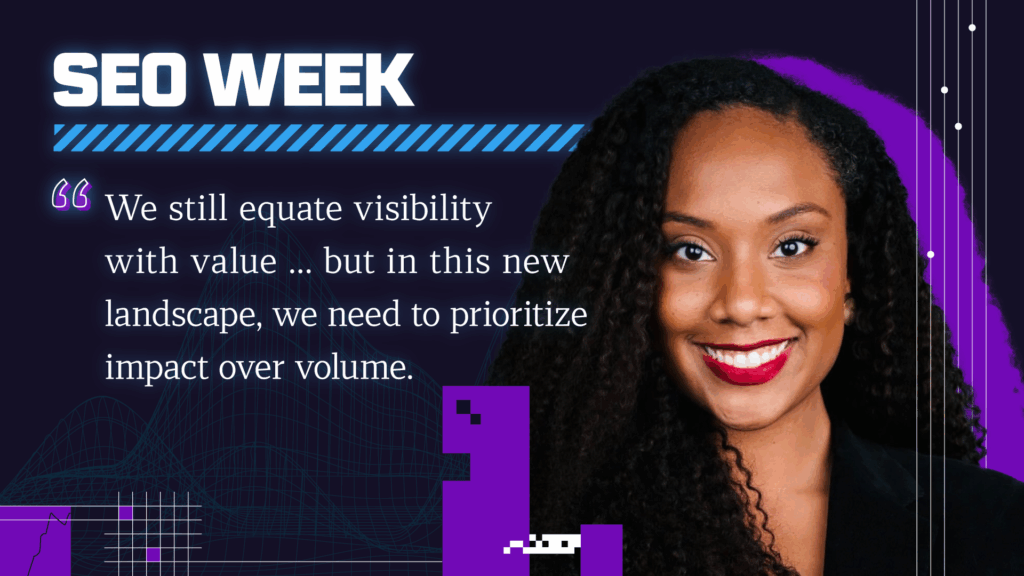You’ve spent weeks (maybe even months) migrating or updating your company website. It’s well-optimized and has a strong backlink profile.
You’re killing it.
And then you see Google is ranking another site with fewer links higher.
What gives?
Backlinks do matter but remember Google uses more than just links or keywords to rank websites. According to Google’s John Mueller, no single factor can help you rank—which means backlinks alone won’t get you to #1.
While there could be many reasons why a site loses ranking when it has the most links, there are a few common culprits.
But first, let’s cover the basics of backlinks.
Table of Contents
What are backlinks?
Backlinks are the clickable text that comes from another website. Also referred to as inbound links, backlinks from respected websites, pass value back to yours. They’re telling Google, “we believe the content that we’re linking back to provides value to our users.” Google takes that signal as a hint that your content is high-quality.
When you talk about “my backlinks” or “our site’s backlink profile,” that refers to the number and quality of links pointing from other websites to your site.
For example, every week, Search Engine Roundtable publishes a roundup of useful SEO content, and iPullRank has earned this backlink:
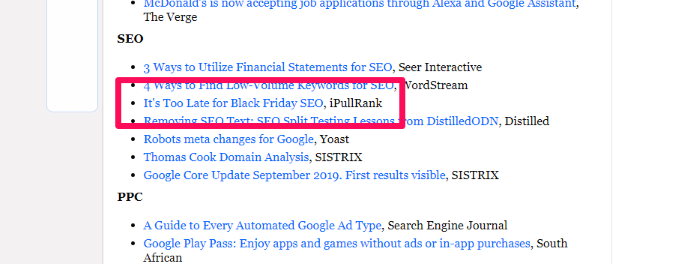
Backlinks can send traffic to your website through HTML. Users can click those links to get to your site, but they serve a more important function: backlinks are critical to SEO.
How do backlinks help SEO?
Backlinks serve as a sort of “vote,” telling Google your site is relevant and trustworthy, especially if the site linking to yours has a high domain authority.
So, get a ton of backlinks and your site should soar in the search rankings, right?
Unfortunately, it’s not that simple. (Trust me, I wish it was!)
John Muller, the SEO Essentials trends analyst at Google, shared in a Google Office Hours:
“I would tend not to focus on kind of the total number of links to your site or the total number of domain links to your website because we look at links in a very different way…The total number [of links] doesn’t matter at all, because you can go off and create millions of links across millions of websites if you wanted to. And we could just ignore them all.”
Most SEOs and digital marketers will tell you backlinks are one of the most important factors for SEO. But then Google says, essentially, the number of backlinks doesn’t matter.
So what’s the truth?
Backlinks matter. They aren’t the only thing that matters, but backlinks are the backbone of well-ranking content. Even more, the quality of backlinks matters.
It’s how Brian Dean increased organic traffic by 110% in 14 days, it’s how Ahrefs got a page to the #1 spot in Google, and while not explicitly responsible, did contribute to a major U.S. bank’s increased organic traffic 20% YoY which generated more than 26 million in additional value.
Can you rank without backlinks?
Yes, you can 100% rank a page without backlinks. You can also dig a ditch with a toothpick—it’s just going to take a while.
On a more serious note, there are specific steps you can take to rank a page without backlinks, including:
- On-page SEO: Use keywords in your headers, use optimized anchor text for internal URLs, and use common questions users ask as H2 when possible.
- Target keywords with very low competition: Low-competition keywords are easier to rank for, so adding these to H2s or creating content clusters around these keywords can make it easier to rank without backlinks.
- Page speed: If your website loads slowly, all the backlinks in the world won’t save you. Use PageSpeed Insights to make sure your site is blazing fast.
When would backlinks be a bad thing?
If a few links are good, wouldn’t a ton of backlinks be great?
Not necessarily. Backlinks from spam sites or those in irrelevant industries can actually negatively impact your SEO. Additionally, if you go from having two backlinks to having 50, Google will suspect you’re doing something shady like buying links.
Instead of trying to game the system, building backlinks should be a steady process over time.
This video with iPullRank founder Michael King covers how link building has changed and what strategies to focus on now.
Why would your site rank lower than a site with fewer links?
Google updates its algorithm multiple times a year, sometimes as often as every few days. Those algorithm updates can help a site with fewer links pull ahead of your content.
See how search algorithms work according to Michael King.
Your site might rank lower than a site with fewer links if you have issues like:
- A Google penalty (manual or algorithmic)
- Slow load time
- Thin or irrelevant content
- Older content that hasn’t been updated
- Poor on-site optimization
- Lack keywords users are searching
- Most of your backlinks are from spam sites
You should also check your robots.txt file to ensure you’re not blocking Google bots from indexing your site. It’s rare, but it can devastate site rankings if not set up correctly.
What can you do to outrank a site with fewer links?
The best way to outrank a site with fewer backlinks is to challenge them to a dual—may the best website win! Okay, not really. To find out how to outrank sites with fewer links, we asked the experts.
Crystal Carter, the Head of SEO Comms at Wix suggests using different link formats:
“Don’t just go for the plain blue links. Try for the:
- Google Images
- Video rankings
- Rich Results
- People Also Ask
I’ve done this a few times and if you are in the top 20ish for plain blue links, and go for G Image, for instance, being top of images, will move you to the top of the plain blue links as well.”
Blake Denman, founder of RicketyRoo, shared his top four methods for outranking a site with fewer links:
- CrUX benchmark
- Internal links
- Structured data
- Tweet @JohnMu
Asking John Mueller for advice is definitely a creative way to rank higher, but there are also SEO steps you can take on your own site, including:
Get rid of spam links
If you have a ton of spammy backlinks or links from low DR sites, all those awesome backlinks could be dragging you down in the search results.
Start by running a backlink audit, using tools like Ahrefs, Ubersuggest, or Semrush.
If you find a lot of backlinks from spam sites, it’s time to clean up your backlink profile. Start by emailing sites and asking them to remove the link to your site.
If that doesn’t work, you can try using Google’s Disavow tool, which asks Google not to count those links. This is not a silver bullet solution, and it does come with its own share of risks—including a drop in rankings.
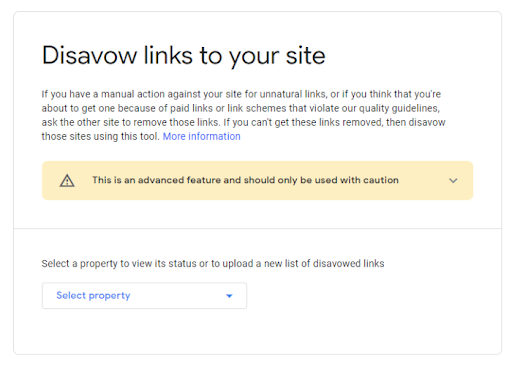
There’s also some speculation that the Disavow Tool isn’t particularly effective.
If you have a ton of spammy links you think are impacting ranking, it’s probably better to work with a professional.
Want to get a backlink audit? Schedule a call with iPullRank to see how we can help.
Link building in the age of spam isn’t easy. Instead of aiming for more links, focus on high-quality links that feel natural and provide value to users.
Solve users' problems better
The best way to outrank a site with more links is to solve your users’ problems better than your competitors. Start by looking at the top-ranking sites for your keywords and see how you can create more useful content.
Say you’re running the marketing department for a company that sells luggage. You created a killer piece of content titled “5 Best Bags for Weekend Travel.” Despite building a backlink profile, you’re still getting outranked.
Let’s look at those sites ranking higher:
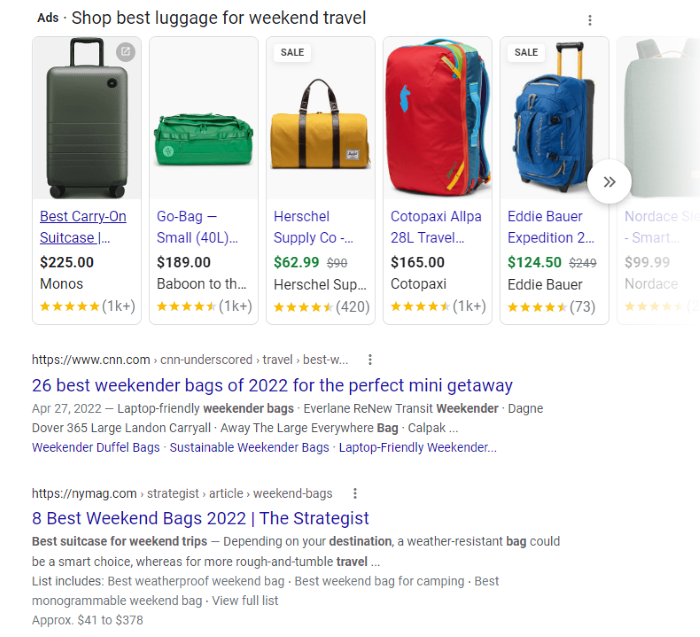
The top results are Google Shopping ads, which you can’t do much about. (I do recommend optimizing your site for Google Shopping Ads; you can land those for free.) But take a look at those two top results from CNN and NYMag.
CNN’s list has 26 bags, so they covered a lot more options. NYMag also has more than 5, though they only have 8. They’re also optimized for sitelinks, which take up more space in the SERPs and let users click directly to specific pages.
Mike Ginley, Senior SEO at Humana, recommends you “solve the user’s problem better than the SERP competition in the easiest way possible.” He used this strategy to outrank a page with 42 backlinks:
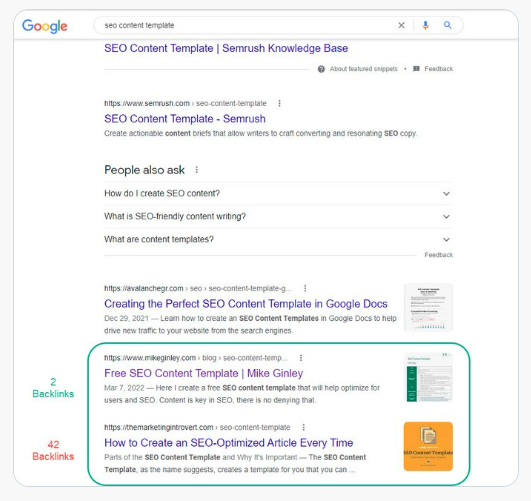
Look at your competitors and see how you can create more in-depth or targeted content that solves users’ issues.
Manually look at the SERPs and adjust for search intent
SEO tools can point you in the right direction, but sometimes you need to have a heart-to-heart with your target keywords.
These SaaS tools can only provide a slice of the whole picture.
There’s value in taking the time to plug your keyword into Google and analyze what’s ranking where.
Imagine you are searching for the term “Tag Team”. Are you looking for information about wrestling or about the 90s Hip Hop group?
That was the challenge that DC Glenn, one-half of the musical group Tag Team, encountered when he started to focus on his SEO. He fought hard to disambiguate the SERP with a lot of work using Wikidata.
Learn more about his approach when he was interviewed about outside-the-box-SEO tactics on our Rankable Podcast:
Search intent can frustrate. You cannot force a round peg into a square hole. Just because you want to rank your product page for a head term, it doesn’t mean that Google plans on doing you any favors cause you’re a nice SEO.
Imagine a local search for a query like ‘Brooklyn Burger.’
What happens when there’s a company called Brooklyn Burger and they rank for most of the results on page 1?
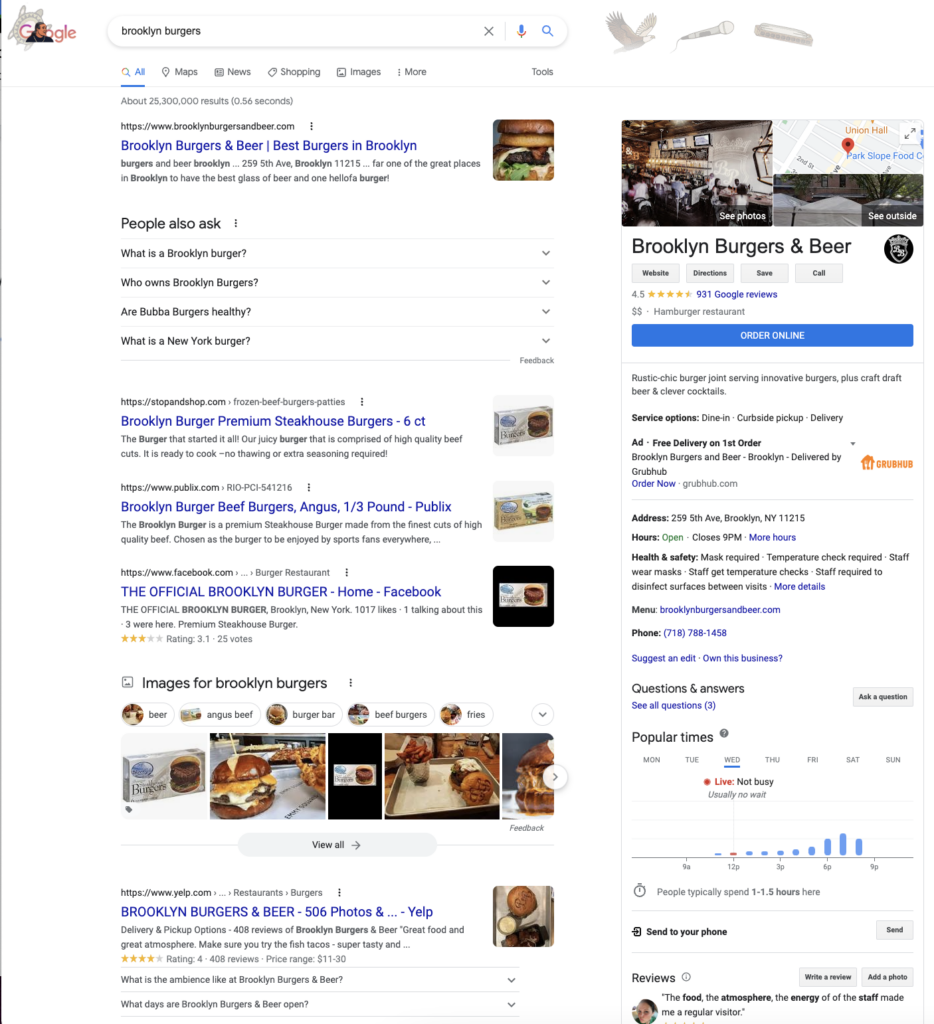
It’s unlikely that any number of backlinks will boost you up to the top ranking (let alone page 1).
You can get a sense of ranking opportunities just by looking at that SERP. Your content might be mismatched with the wrong keyword or content format in the first place.
Lyndon Nelson-Allen, a.k.a Darth Autocrat on Twitter, suggests two potential approaches for updating your existing content. You can either “adjust the target. Sometimes the content you’ve got is targeting a version of a term and you could just as easily target a different version. In such cases, review the content, and the variant SERPs, and see what you could nudge it towards. Alternatively, consider other content formats. Yes, the piece you want to rank may be a product or pitch page, but creating content that targets the term and is an interview, roundup, review, resource list, etc. can give you more relevance and internal link opportunities (+ mediums!)”
At the same time, as Google starts to add context menus and “Broaden this Search” sections, there may be opportunities to address a different POV of the topic that starts to show up higher in the rankings.
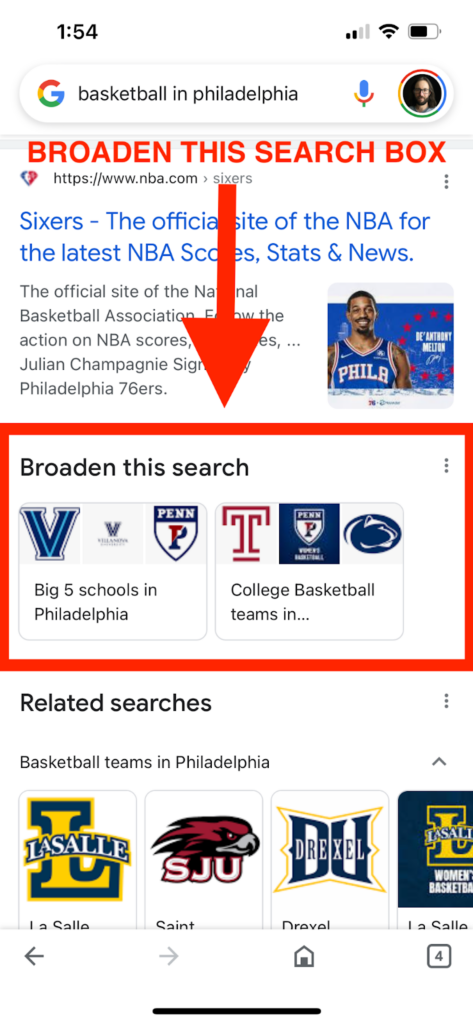
Andy Beard suggests that you get aggressive. Imagine you, “have some budget, and already rank #2. Create a new page covering the topic from a different angle, using PAA and related searches for hints. Interlink the 2 pages.
The aim is now to push the new page such that it could earn 10th place on the first page. Google can then roll them up into an indented SERP, and it might be enough to get the #1 and #2 positions.
The ultimate in aggressive SEO is when you have a budget and a search competitor is poorly monetized. Just buy them.”
Obviously, Andy’s suggestion to simply purchase your competitor is made tongue in cheek, but the rich get richer and the organization with the most money and resources does tend to win.
You have to be very strategic when underresourced.
Target featured snippets
Featured snippets are expanded search results that appear at the top of the search results, usually in the form of a paragraph, list, or table.
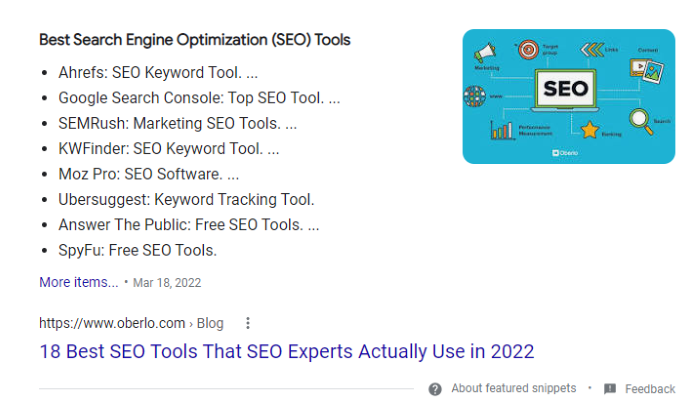
Sites with featured snippets can outrank any other site no matter how many links they have. There’s one catch—who gets the featured snippet is up to Google. So you can optimize for it, but there’s no guarantee you’ll land the coveted spot.
To improve your chances of getting the snippet, there are several steps you can take, including:
- Answering popular questions about the topic you’re targeting. (Ideally as quickly as possible.)
- Use lists when it makes sense.
- Use clear language.
- Use headers to organize your content.
- Include questions in headers where it makes sense.
Optimize for on-page SEO
Backlinks impact ranking—that much we know. But building a backlink profile is only part of the battle. Making sure your on-page SEO is on point can also help you outrank a site with more links.
Blair MacGregor, Principal Digital Marketing Strategist of Launch That, suggests that you enhance the quality Expertise, Experience, Authoritativeness, and Trustworthiness (E-E-A-T) signals on your page that you can control along with a focus on search intent,
- “Provide greater depth of content to serve as many user intents as completely as possible.
- Provide greater expertise on the page than the one outranking you (more qualified experts/reviewers).
- Summarize content more effectively for people that skim (e.g. a ‘Key Takeaways’ section)”
Other on-page SEO steps to take include:
- Performing keyword research to find not just main KWs, but secondary KWs users search for.
- Including main and secondary KW in headers.
- Using heading to break content up.
- Including images.
- Add alt tags to your images.
- Including a meta title and meta description.
- Make sure your site code is clean.
Specifically when it comes to internal links, Mou Mukherjee, Freelance Content Marketer of Wryte.click, recommends first tackling the low-hanging fruit,
“We often ignore the power of simple, easily doable, and easily achievable on-page tasks that can massively improve ranking.
Optimize for low-hanging fruit that includes but is not limited to:
1. Harness the power of internal links. They’re helpful for Google bots to crawl effectively and understand the site architecture. While writing new posts, we link to previously published pages but often forget to add the latest links to the older posts. Also, make sure the links are relevant and helpful for readers.
2. Optimize the anchor texts. “Click here to read more” and “read this blog” are not good examples of anchor texts. Give your readers enough reason to open that link. Add more context to your anchor texts.”
Improve the information architecture of your site
Speaking of internal links, sometimes you need to take a step back and review the entire organization of your website.
Saijo George, Founder of TLDR Marketing shared,
“If the site has a lot of pages, then I find proper information architecture and a solid internal link strategy go a long way.
If the number of pages is limited go all out on content, try and cover subtopics that existing ranking pages are missing.”
Want to Outrank A Site With Fewer Links? Make Users Happy
Why is your site losing rankings when it has the most links? The answer is simple—users like your competitors’ content more. Your goal is to figure out why and fix the issue. Backlinks alone won’t help you rank.
Get a professional review of your backlinks profile with a backlink audit. Schedule a call with iPullRank.


